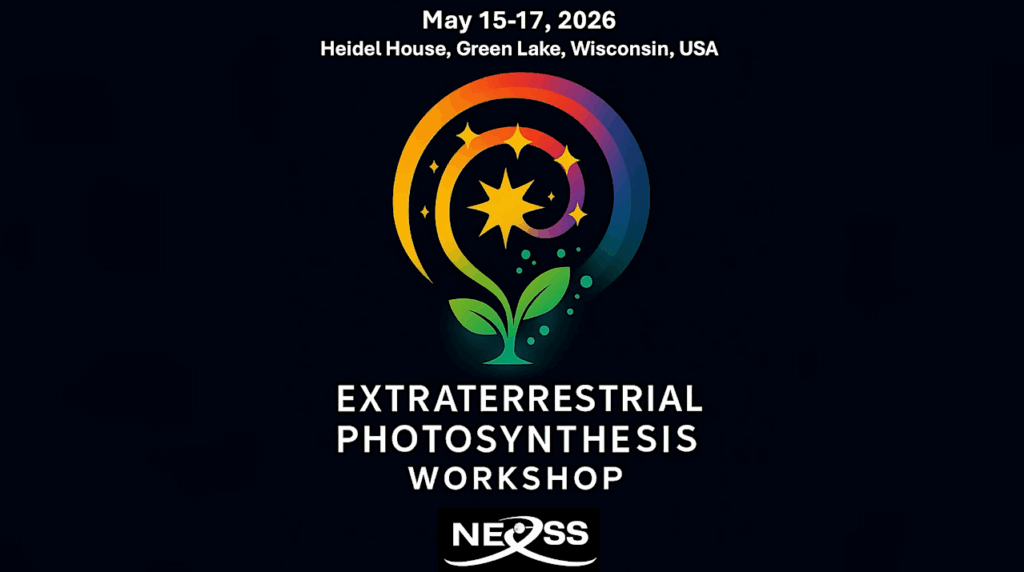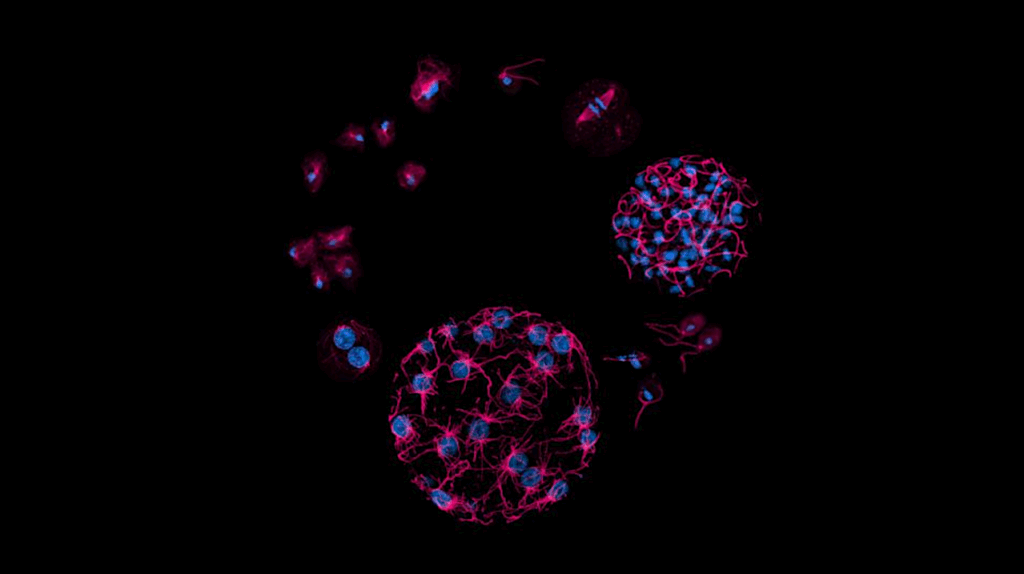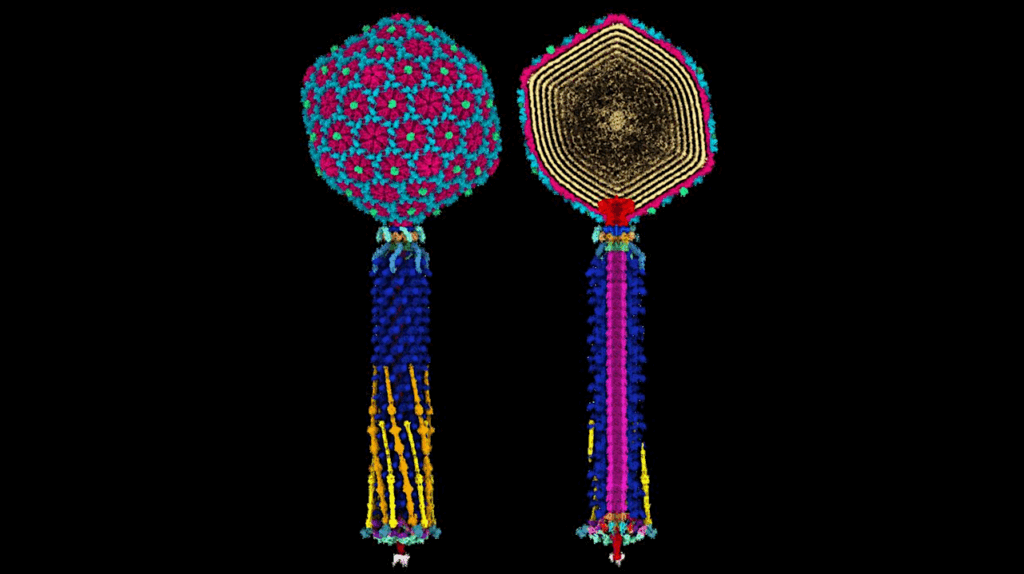Extreme UVC Radiation Tolerance In Bacteria Recovered From Earth’s Stratosphere
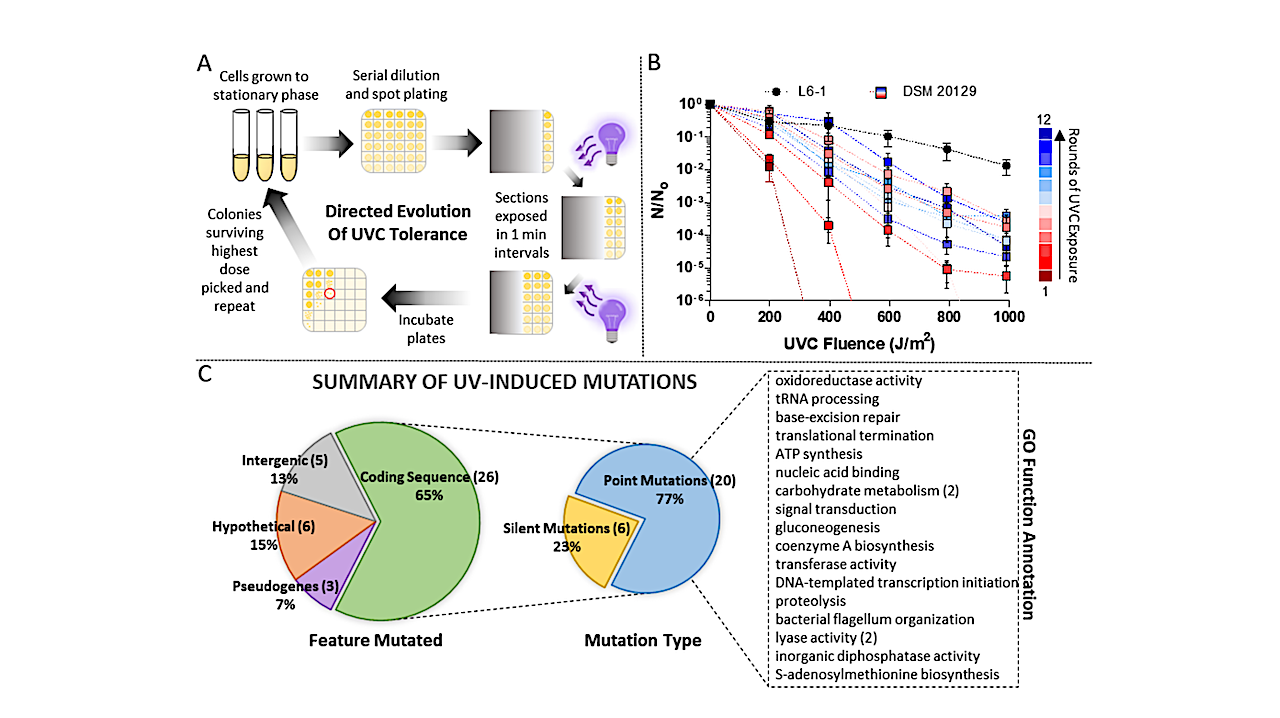
Aerosolized microbes surviving transport to and in the stratosphere endure extremes of low temperature, atmospheric pressure, and relative humidity, and high shortwave ultraviolet radiation flux. However, the genetic determinants for traits enabling resistance to the combination of stresses experienced by microbes in the high atmosphere have not been systematically investigated.
In this study, we examined Proteobacteria and Actinobacteria isolated from the stratosphere (18 to 29 km ASL) and that demonstrated high tolerance to desiccation (15-25% RH) and UVC radiation (UVCR; λ= 254 nm). Closely related reference strains were more sensitive to UVCR than the stratospheric isolates, indicating that extreme resistance is not universally distributed in these phylogenetically related bacteria. Comparative genomic analyses revealed DNA repair and antioxidant defense genes in the isolates that are not possessed by the related reference strains, including genes encoding photolyase, DNA nucleases and helicases, and catalases.
Directed evolution by repeated exposure to increasing doses of UVCR improved the LD90 in a sensitive reference strain by ∼3.5-fold. The mutations acquired in Curtobacterium flaccumfaciens pv. flaccumfaciens strain DSM 20129 incrementally increased its UVCR resistance, with the accumulation of 20 point mutations in protein coding genes increasing tolerance to a level approaching that of stratospheric isolate Curtobacterium sp. L6-1. The genetic basis for the increased UVCR tolerance phenotypes observed is discussed, with a specific emphasis on the role of genes involved in DNA repair and detoxification of reactive oxygen species.
Importance
Ultraviolet radiation is omnipresent in sunlight and has important biological effects on organisms. The stratosphere is the only location on Earth where microbes receive natural exposure to highly mutagenic wavelengths (<280 nm) of ultraviolet radiation. Genetic studies of bacteria from an environment that selects for extreme ultraviolet radiation resistant phenotypes has expanded what is known from studies of model species (e.g., E. coli) and identified potentially novel protection and repair strategies.
In addition to deepening understanding of ultraviolet radiation photobiology in atmospheric microbes and bacteria in general, these advancements are also highly relevant to astrobiology and space biology. The cold, dry, hypobaric, and high radiation environment of the stratosphere provides an earthly analog for thin extraterrestrial atmospheres (e.g., Mars) and is ideal for bioprospecting extremophile phenotypes that enable engineering of genetic stability and functionality in bio-based space life-support systems or any application where long-term persistence is desirable (e.g., biocontrol).
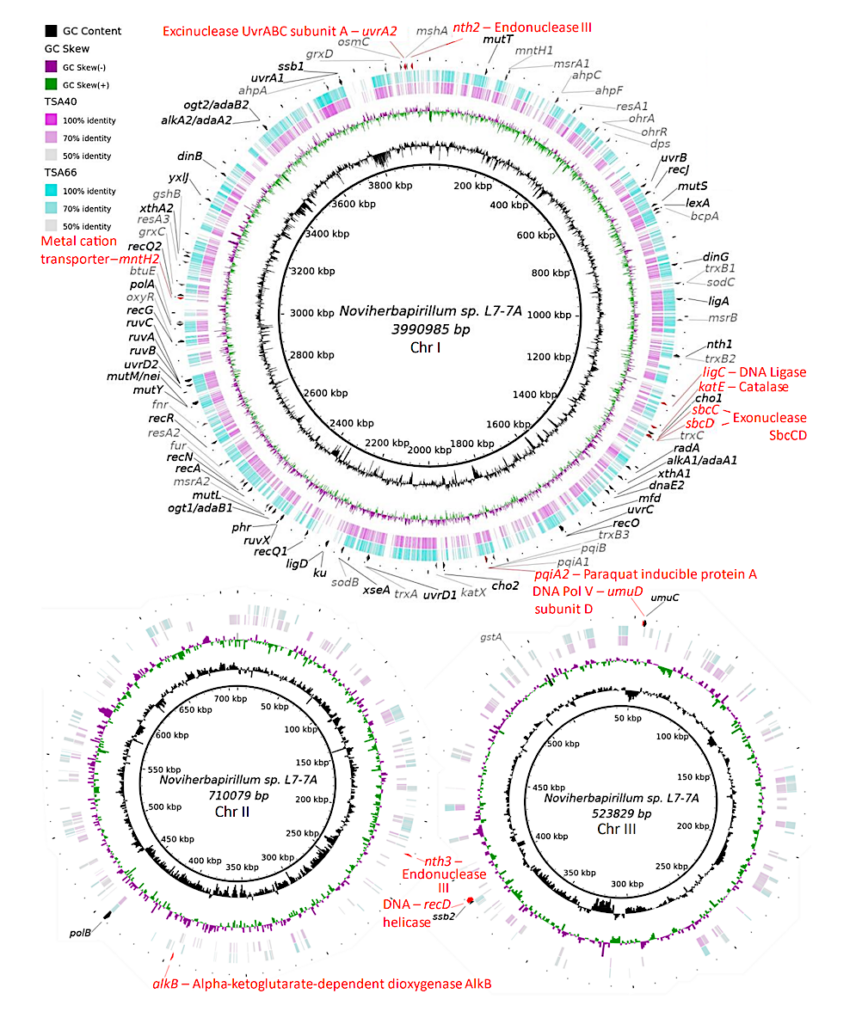
DNA repair and ROS detoxification genes in Noviherbaspirillum sp. L7-7A not found in strains TSA40 and TSA66. Genomes were compared using the BLAST Ring Image Generator (BRIG) with the blastp algorithm. Rings represent the following (from innermost to outermost): 1) GC Content, 2) GC skew of the L7-7A genome, 3) percent identity to L7-7A of protein homologs found in strains TSA40 and TSA66, and 4) DNA repair (black) and ROS detoxification (grey) genes. Genes present in L7-7A but absent in both TSA40 and TSA66 are indicated in red text.
Adam J. Ellington, Tyler J. Schult, Christopher R. Reisch, Brent C. Christner
Source: https://www.biorxiv.org/content/10.1101/2023.03.27.534493v1
Astrobiology


